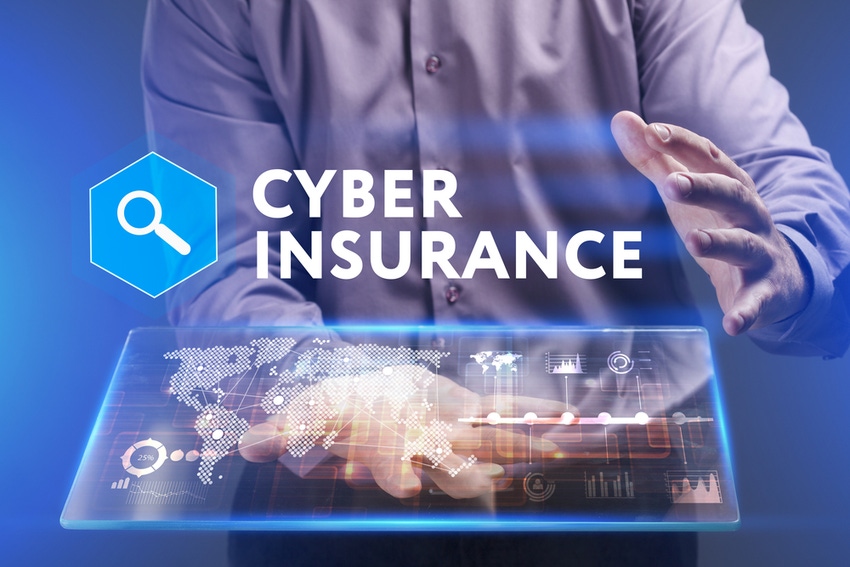If your business is online and accesses sensitive data, the need for cyber insurance is becoming critical.
August 8, 2022

By Jeff Zaba

Jeff Zaba
It’s never simple to purchase insurance for your company. Reading terms and exclusions is right up there with having your wisdom teeth out. Imagine that you’re looking for cyber insurance to shield your company from the effects of cyberattacks. Sorting through choices for your own organization is difficult but not surprising, given that major corporations also find cyber insurance to be quite complicated.
Fortunately, as insurers meticulously specify coverages, terms and exclusions, the cyber insurance market has grown simpler over time. Over the past several years, insurers (and most organizations, without a doubt) have also learned a lot more about cyberattacks, allowing managed service providers (MSPs) to put additional safeguards in place to either deter attackers or lessen the harm caused by assaults.
Cyber Insurance Ins and Outs
If you’re in the market for cyber insurance, here’s a primer on what it is, why you need it and what risks it covers.
What exactly is cyber insurance? The impacts of a cyberattack can frequently include both the disruption to the business — such as days lost to supplying clients — as well as the monetary impact. Cyber insurance, also known as cyber-liability insurance, can protect enterprises from both effects (such as the cost of lost business). Your company can survive the challenging time during and immediately after a cyberattack by having cyber insurance coverage in place, at least in terms of paying the costs associated with a successful assault. Even while you can’t stop a cyberattack from happening, you can protect your company from its worst repercussions.
Why cyber insurance is necessary for your business: Organizations require cyber insurance if they conduct business online (which is almost everyone these days), utilize technology or transfer or keep electronic data. The latter criteria are undoubtedly met by MSPs because they frequently have access to the data of their clients.
If your company has access to sensitive data, the necessity for cyber insurance becomes increasingly critical. And let’s face it, much of the data you manage or deal with on your clients’ behalf undoubtedly comes under the category of “sensitive,” such as financial or personal data. Ransomware assaults have increased in frequency because such data may be very alluring to cyber criminals, who are aware of the worth of the data they might obtain from companies.
Ransomware attacks are a concern for business owners everywhere. In a 2021 study, most business respondents (80%) stated they feel “very prepared” or “moderately prepared” in the event of a ransomware attack while only 7% claimed to be “extremely prepared.” However, poll participants were also concerned that they wouldn’t be able to fully mitigate the lasting effects of the event, citing business interruption and reputational harm as the worst-case scenarios.
What cyber insurance covers: Cybersecurity insurance often pays for “first-party” damages, or losses that the insurance buyer sustains. First-party cyber coverage safeguards …
… your data, including employee and customer information, according to the Federal Trade Commission. This type of coverage can, but not always, include:
Data replacement and recovery after loss or theft: A business’s expenses to restore any data harmed or rendered inaccessible.
Call-center services and customer notification: An organization of any size would be compelled to tell all their customers about the data breach if personally identifiable information (PII) about their customers was made available.
Attack remediation: The expense of employing forensic data professionals who can retrieve data, for instance, in a ransomware attack when hackers have locked down data.
Fines and legal fees: If the attack violates privacy or regulatory policies, it could cover some or all of any fines, penalties and expenses associated with legal representation.
Income lost as a result of company disruption: That’s assuming the attack was severe enough to force a business to close for a prolonged period.
Repairs to any tech systems: This includes any hardware or software that was compromised.
Ransom: If the hackers demand payment and the organization pays it, the cost may be reimbursed.
What isn’t included in cyber insurance: Cyber insurance rarely covers cyberattacks that could’ve been easily prevented if it weren’t for careless security procedures. Typically, this applies to attacks that were the result of human error or carelessness, such as not applying the proper patches or managing network access, insider threats or preexisting vulnerabilities.
Obtaining an Insurance Policy
Even large corporations have trouble understanding and obtaining cyber insurance. If you’re a midsize or small MSP, the search process can be considerably more difficult. Before you look for insurance, evaluate your risk footprint and how to decrease it, since underwriters will want to know the possibility of a cyberattack and how severe an attack would be.
You should also investigate if you need a separate cyber insurance policy or whether you can find sufficient cyber protection inside an existing policy. However, given that insurers desire to more clearly identify the risks and coverage for swiftly evolving cyber threats, you could discover that there are more stand-alone plans than previously offered.
Be Realistic with Your Expectations
Keep in mind that there are impacts from which cyber insurance cannot shield your company. Ensure that you are fully aware of what is — and isn’t — covered. This is crucial. While having cyber insurance in place might aid in your company’s ability to withstand an attack, ultimately, your insurer isn’t responsible for your company’s cybersecurity.
Jeff Zaba is director of strategic partnerships at ConnectWise. He graduated from the University of Alabama in 2003. You may follow him on LinkedIn or @ConnectWise on Twitter.
You May Also Like
